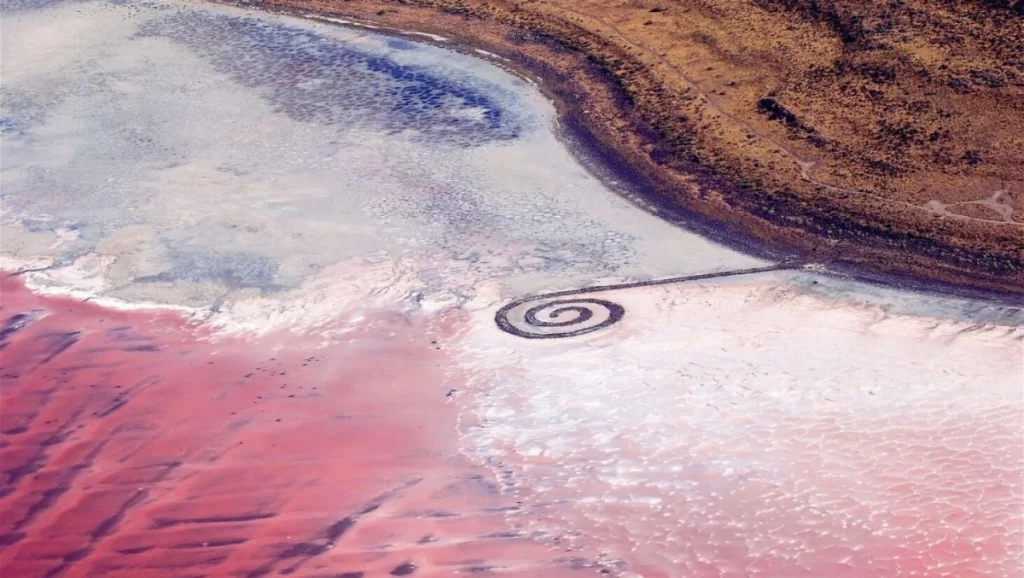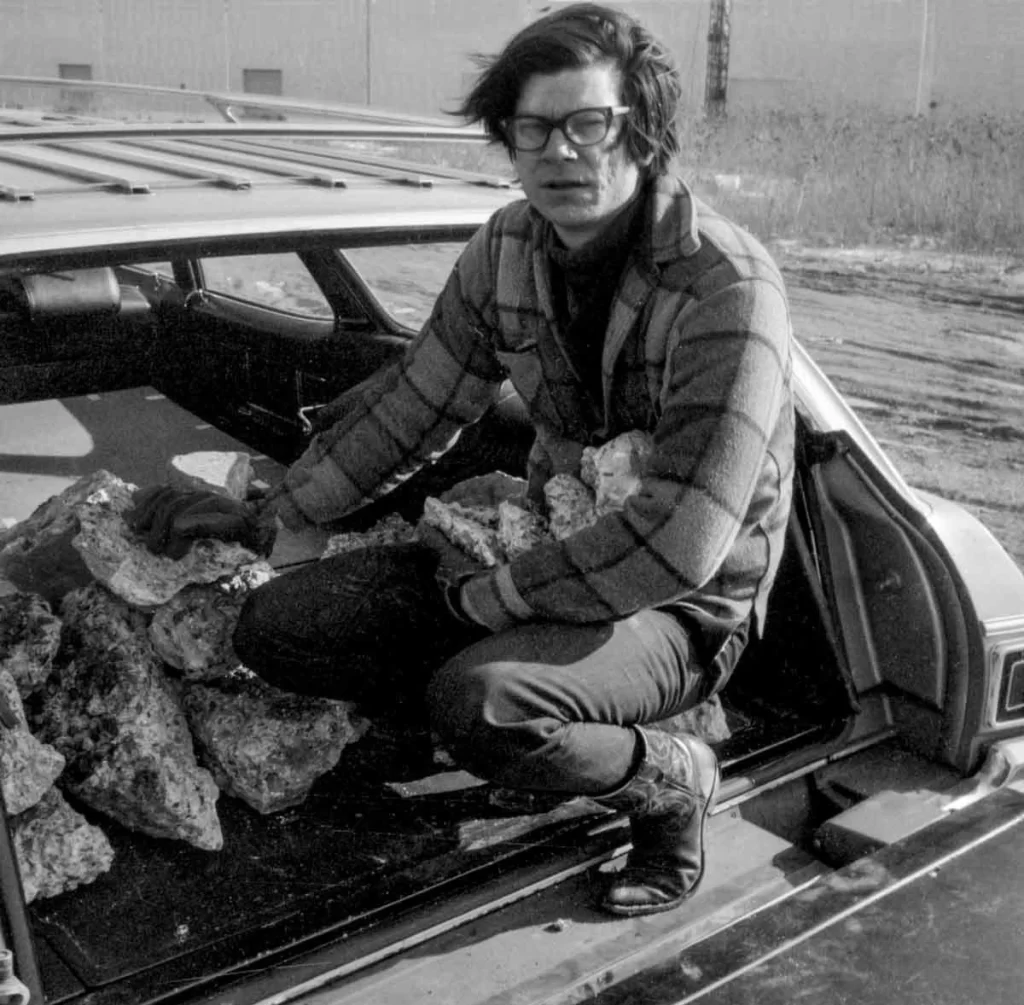Spiral Jetty is Now on the National Register of Historic Places
American sculptor Robert Smithson’s land art installation Spiral Jetty (1970) has been added to the National Register of Historic Places (54 years after its creation, nonetheless), the official U.S. federal list which identifies and preserves locations of historical and artistic merit. The artwork is recognized as Utah’s official state work of Land Art.

The list includes significant sites like Ocmulgee Mounds National Historical Park in Macon, Georgia, and Ford’s Theatre in Washington D.C. The National Register of Historic Places only considers sites older than 50 years, making the list smaller, just a little over 100,000.
Making of Spiral Jetty
Robert Smithson envisioned Spiral Jetty in 1968, right after completing his Mono Lake Site-Nonsite project in California. He stumbled upon a book about Bolivia’s red salt lakes. He found persuading a contractor challenging. However, within two years, he started designing and constructing his project. He aimed for Spiral Jetty to elicit feelings of indeterminate scale, nonlinear time, and perpetual entropy. Smithson was taken aback by the Great Salt Lake’s red hues, which is a natural outcome of salt-loving algae and bacteria present in the water.

The execution of Spiral Jetty required transporting approximately 6,650 tons of black basalt, crystallized salts, rocks and mud into a 1,500-foot long, 15-foot wide counterclockwise spiral extending from Rozel Point, Utah. This task was completed twice over nine days as Smithson quickly became dissatisfied with the initial layout.
Just two years after Spiral Jetty was completed, heavy rains submerged it for three decades. Coupled with its remote location, it became relatively obscure. However, with the rise of the internet—and severe droughts have made it visible. In recent years, the lake has been shrinking; a mile of lakebed now lies between the sculpture and the shoreline. If you are planning to check it out, the artwork is either exposed or submerged depending on the water levels of the day.
Spiral Jetty After Robert Smithson’s Demise
Robert Smithson passed away in 1973 while conducting an aerial survey of the Amarillo Ramp site in Texas. In 1999, land artist, Nancy Holt, Smithson’s widow, donated Spiral Jetty to the Dia Art Foundation; who currently hold the land’s lease. The Foundation manages and maintains the land with assistance from the Great Salt Lake Institute, the Holt/Smithson Foundation, the Utah Museum of Fine Arts, and Utah’s Division of Forestry, Fire, and State Lands.

Dia Art Foundation respects Smithson’s interest in entropy by prioritizing documentation of the natural deterioration the artist intended, rather than performing maintenance. Spiral Jetty is never closed to the public; promoting a “Leave No Trace” policy for visitors.
Jordan Carter on Spiral Jetty’s New Designation
‘The protective review afforded by the National Register designation further advances our efforts to preserve Spiral Jetty as Smithson intended,’ said Dia Art Foundation curator and co-department head, Jordan Carter. He adds, “The designation does not include any physical signing or plaques so the site will remain as is. We hope the enhanced recognition will dissuade other interventions in the landscape that negatively impact the environment and the lake’s ecology.”
About Sculptor Robert Smithson
Robert Smithson (1938-1973) was an innovative American artist, primarily recognized for his role in the Land Art movement. This movement, which is also referred to as earth art, originated in the 1960s. It was a conceptual art initiative that sought to investigate various non-commercial and alternative methods of artistic expression, often utilizing environmental locations and natural materials.

Jessica Morgan on Robert Smithson’s Artwork
“We are delighted that Spiral Jetty has received this important recognition, which will help us spread awareness of the iconic artwork and advocate for its long-term preservation,” Dia director Jessica Morgan remarked. “Beloved in Utah and far beyond, this artwork has come to mean many things to many people, and we are proud to continue our work caring and advocating for Spiral Jetty to preserve it for generations to come.”
Image Courtesy – UNews Archive – The University of Utah
Contributor





